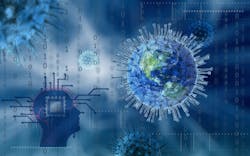WHO and MPP announce the first global, non-exclusive license for a COVID-19 technology
WHO’s COVID-19 Technology Access Pool (C-TAP) and the Medicines Patent Pool (MPP) finalized a licensing agreement with the Spanish National Research Council (CSIC) for a COVID-19 serological antibody technology. This represents the first transparent, global, non-exclusive license for a COVID-19 health tool, and the first test license signed by MPP and included in the WHO Pool.
The test effectively checks for the presence of anti-SARS-CoV-2 antibodies developed either in response to a COVID-19 infection or to a vaccine.
The aim of the license is to facilitate the rapid manufacture and commercialization of CSIC’s COVID-19 serological test worldwide. The agreement covers all related patents and the biological material necessary for manufacture of the test. CSIC will provide all know-how to MPP and/or to prospective licensees as well as training. The license will be royalty-free for low- and middle-income countries and will remain valid until the date the last patent expires.
Dr. Rosa Menéndez, president of CSIC, emphasized how important it is to seek solutions so that technologies related to the COVID-19 pandemic in particular, and health in general, reach all countries, including those most in need. “In this sense, we would like this action by CSIC, of taking part in the international initiatives of MPP and WHO, to become an example and a reference for other research organizations in the world.”
The technology to date has resulted in four different tests, one of which has the potential to distinguish the immune response of COVID-19 infected individuals from vaccinated individuals. This should aid further research into the level and length of immunity and the efficacy of the tools at our disposal.
The tests are simple to use and suitable for all settings with a basic laboratory infrastructure, such as those found in rural areas in low- and middle-income countries. The reading can theoretically be done manually (with naked eye comparing the color of the wells against the color chart), but an ELISA reader is recommended for greater accuracy of results.
Promising performance data in the European population will need to be supplemented by the companies that will produce this technology if they plan to sell the test in low- and middle-income countries.
